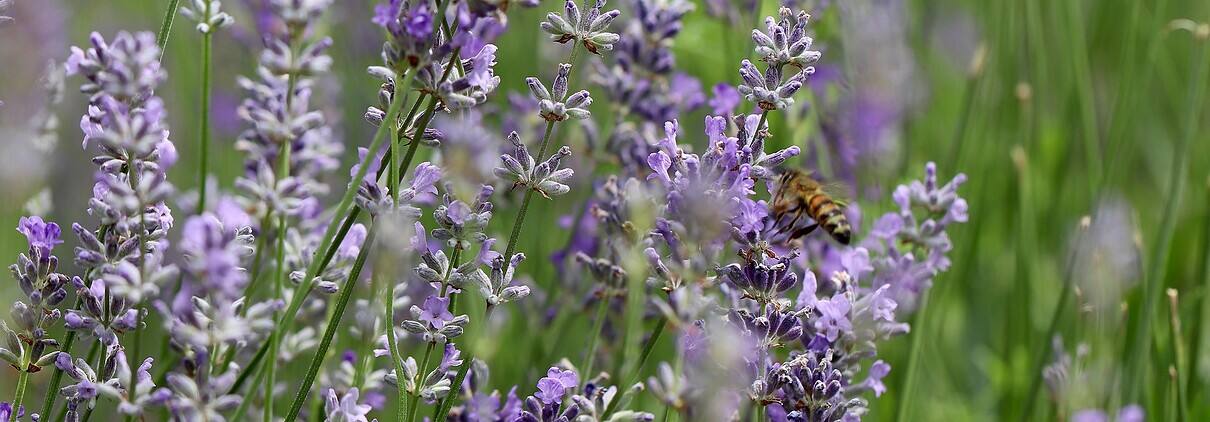Dealing with Bugs in Stuttgart
If you enjoy spending time outside, you’re probably used to dealing with insects and arachnids. We offer some information on which bugs to watch out for in the Stuttgart area as well as tips for dealing with them safely.
Ticks
Southern Germany is an area in which ticks are a widespread issue. They become active as soon as temperatures warm to the mid 40s (7° C), which is the majority of the year here. The peak season is March to October, but tick exposure can in fact happen year round. Ticks live in high grasses as well as wooded areas with leaf litter. You may come into contact with them anytime you walk across a field or through a brushy area, as well as when pets return from such excursions.
Ticks can carry diseases. Generally they present with a high fever as well as flu-like symptoms. Of greatest concern is Lyme disease, known as Borreliose in German. When it is caught early, a course of antibiotics is usually enough to fight off the Borrelia bacteria. Tick-borne encephalitis (TBE), called FSME in German, is endemic in Southern Germany. The best means of protection are the FSME vaccination course and actively avoiding tick bites.
There are several ways to avoid tick bites. First, you can avoid overgrown and brushy areas. Stick to the paths and sit on picnic blankets or chairs rather than leaning on trees. Second, wear long-sleeved shirts and long pants tucked into socks. Third, wear a tick-repellant insect spray and/or clothing treated with 0.5% permethrin. Finally, as soon as you return home from your time outdoors, do a thorough check for ticks on yourself as well as any kids or pets, and remove them immediately. (Investing in a pair of tick tweezers will help!) Shower promptly to increase the likelihood of getting rid of any you might have overlooked. Also check clothing and bags, on which ticks might have caught a ride into your home.
Spiders
Good news – there are no spiders with venom strong enough to harm a human in the Stuttgart area. In fact, nearly all of the hundreds of spider species living here don’t have fangs strong enough to penetrate human skin! One exception is the giant house spider. They are easily recognizable thanks to their long legs, up to 2 in (5 cm) in length. Still, bites are rare and aren’t dangerous. You should just clean the bite to avoid any possibility of infection.
Mosquitoes
Summer weather also means mosquitoes become active in Stuttgart. You can reduce the likelihood of their breeding near your home by eliminating sources of shallow, still water. Install screens in your windows to help limit the number that find their way into your home. All home improvement stores have inexpensive netting you can cut to measure and install with self-adhesive velcro tape.
When you spend time outdoors, wear long sleeves and pants as well as insect repellant to avoid bites. Burning a candle with lemon eucalyptus oil can help keep mosquitoes away from your balcony or picnic table.
In addition to the usual anti-itch creams, there is a very popular German invention called the Bite Away which can relieve the itchiness of mosquito bites. The Bite Away and its generic imitators work by heating a small metal plate at the end of the pen to a safe temperature for a limited period. All you have to do is hold the pen against the bite for as long as the light is on, after which the heat will disperse anyway, making it safe to use on children as well.
Bees, Wasps and Hornets
Generally speaking, bees, wasps, and hornets are protected under German federal law. They are important pollinators and essential to the local ecosystems. It is illegal to kill them or destroy a hive or nest without approval. In most cases, these insects are not aggressive unless you threaten them or their home. Many Germans plant pollinator gardens to encourage the local populations.
You can avoid attracting wasps and hornets to your outdoor leisure spaces by keeping food in covered containers and putting waste in sealed bins. Again, installing window screens can help ensure they don’t wander into your home. If you have a hive or nest on your property that you would like to look into removing, you should contact a professional exterminator, known as a Kammerjäger in German, who can advise you as to your legal options.
Oak Processionary Moths
The caterpillars of the oak processionary moth are a tree pest whose hair can be irritating to humans and pets. They are mainly a problem in May and June. You can recognize the caterpillars by their characteristic habit of moving in parade-like formations. They have very long white hairs but it is in fact the tiny invisible hairs that contain the irritating protein called thaumetopoein. These hairs accumulate in their nests and can also be blown by the wind.
To limit your exposure, stay away from the caterpillars and their nests. While they are generally up in oak trees, they may sometimes fall to the ground. Be sure to keep your children and pets away from the nests as well. Once disturbed, a large quantity of invisible hairs can be discharged into the air. Contact with the hairs can cause skin and eye irritation.

